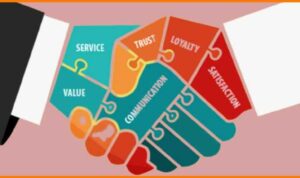Email Marketing Campaigns, a powerful tool in the digital marketing arsenal, offers a direct line of communication to your audience. From planning to analytics, this comprehensive guide will show you how to craft effective campaigns that drive results.
Introduction to Email Marketing Campaigns
Email marketing campaigns are a key component of digital marketing strategies, allowing businesses to send targeted messages to their audience via email. These campaigns can include promotional offers, newsletters, product updates, and more.
Importance of Email Marketing
- Cost-effective way to reach customers directly
- Builds brand loyalty and customer relationships
- Allows for personalized messaging based on customer data
- Drives traffic to websites and increases sales
Examples of Successful Email Marketing Campaigns
Starbucks’ personalized email campaigns offer exclusive deals to customers based on their purchase history, leading to increased engagement and sales.
Amazon sends targeted product recommendations to customers based on their browsing and purchase behavior, resulting in higher conversion rates.
Dollar Shave Club’s witty and humorous email content has helped them build a strong brand identity and loyal customer following.
Planning Email Marketing Campaigns

When it comes to planning email marketing campaigns, there are several key steps to consider to ensure success. From defining goals and objectives to segmenting your target audience, each step plays a crucial role in the overall effectiveness of your campaign.
Define Goals and Objectives
To kick off your email marketing campaign, it’s important to clearly define your goals and objectives. Whether you’re looking to increase brand awareness, drive website traffic, or boost sales, having specific and measurable goals will help guide your campaign strategy. By setting clear objectives, you can tailor your content and messaging to align with these goals, ensuring a more targeted and impactful campaign.
Target Audience Segmentation
Segmenting your target audience is another essential step in planning an email marketing campaign. By dividing your audience into smaller, more specific groups based on demographics, behavior, or preferences, you can create personalized and relevant content that resonates with each segment. This level of segmentation allows you to send targeted messages to different audience segments, increasing engagement and ultimately driving better results for your campaign.
Designing Email Content

Creating engaging email content is crucial for the success of your email marketing campaigns. Here are some tips to help you design compelling email content that resonates with your audience.
Use of Visuals
Visual elements such as images, videos, and infographics can grab the attention of your subscribers and make your emails more engaging. Use eye-catching visuals that are relevant to your content to enhance the overall appeal of your emails.
CTAs
Include clear and compelling call-to-action (CTA) buttons in your emails to encourage recipients to take the desired action. Whether it’s making a purchase, signing up for a webinar, or downloading a resource, a well-designed CTA can drive conversions and improve the performance of your email campaigns.
Personalization
Personalizing your email content based on the recipient’s preferences, behavior, and demographics can significantly increase engagement. Use dynamic content, personalized subject lines, and tailored recommendations to make your emails more relevant and personalized for each subscriber.
Optimizing for Different Devices
Make sure your email content is optimized for various devices, including desktops, smartphones, and tablets. Use responsive design techniques to ensure that your emails look great and are easy to read on any device. Test your emails on different devices and email clients to ensure a seamless user experience for all recipients.
Email Campaign Automation
Automating email campaigns can bring a host of benefits to businesses looking to streamline their marketing efforts and engage with their audience more effectively. By setting up automated email workflows, companies can save time, increase efficiency, and deliver personalized content to their subscribers.
Benefits of Email Campaign Automation
- Increased efficiency: Automating email campaigns allows businesses to schedule emails in advance, saving time and resources.
- Personalized content: With automated workflows, companies can send targeted emails based on user behavior, preferences, and demographics.
- Improved engagement: By delivering relevant content at the right time, automated emails can help increase open rates and click-through rates.
- Consistent communication: Automated campaigns ensure that subscribers receive regular updates and stay engaged with the brand.
Setting Up Automated Email Workflows
- Define goals: Identify the objectives of your email campaign and determine the desired outcomes.
- Segment your audience: Divide your email list into different segments based on demographics, behavior, or interests.
- Create engaging content: Develop compelling email content that resonates with each segment of your audience.
- Choose the right automation platform: Select a reliable email marketing automation tool that offers the features you need to set up workflows.
- Set triggers and actions: Define the conditions that will trigger automated emails and specify the actions to be taken in response.
Examples of Triggered Emails in Automated Campaigns, Email Marketing Campaigns
- Welcome emails: Sent to new subscribers to introduce them to the brand and encourage further engagement.
- Abandoned cart emails: Triggered when a customer leaves items in their online shopping cart, reminding them to complete their purchase.
- Follow-up emails: Sent after a customer makes a purchase to thank them and suggest related products or services.
- Re-engagement emails: Sent to inactive subscribers to rekindle their interest in the brand and encourage them to engage again.
Email Campaign Analytics
In the world of email marketing, analyzing campaign metrics is crucial for understanding the effectiveness of your efforts. By tracking key performance indicators (KPIs) and using analytics data, you can make informed decisions to improve future email campaigns.
Importance of Tracking and Analyzing Email Campaign Metrics
Tracking and analyzing email campaign metrics allows you to measure the success of your campaigns and identify areas for improvement. By monitoring metrics such as open rates, click-through rates, conversion rates, and unsubscribe rates, you can gain valuable insights into how your audience is engaging with your emails.
Key Performance Indicators (KPIs) for Evaluating Email Campaign Success
- Open Rate: The percentage of recipients who open your email.
- Click-Through Rate (CTR): The percentage of recipients who click on a link in your email.
- Conversion Rate: The percentage of recipients who complete a desired action after clicking on a link in your email.
- Bounce Rate: The percentage of emails that were not delivered to the recipient’s inbox.
- Unsubscribe Rate: The percentage of recipients who opt-out of receiving future emails from you.
Using Analytics Data to Improve Future Email Campaigns
Once you have gathered data from your email campaigns, it’s important to analyze the results and make data-driven decisions for future campaigns. By identifying trends, patterns, and areas of improvement, you can optimize your email content, timing, and targeting to increase engagement and conversions.





